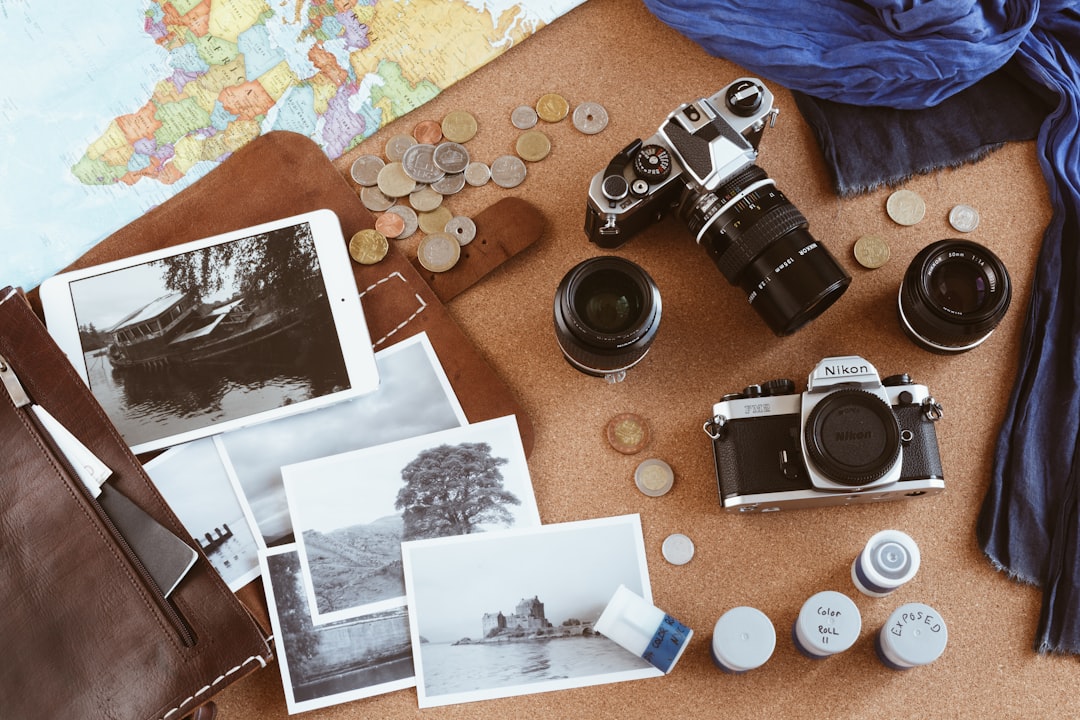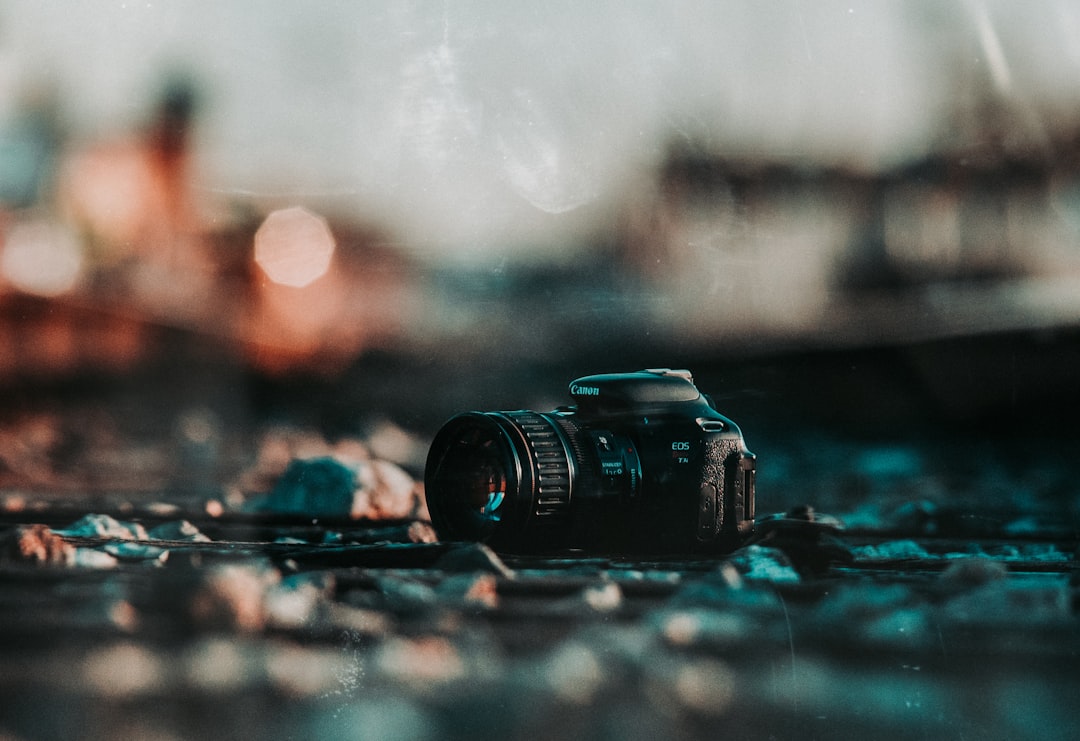Examining The Rise Of Free AI Travel Photo Invites
Examining The Rise Of Free AI Travel Photo Invites - From personal travel photos to generated digital invites
The shift from using pictures snapped during actual journeys to crafting digital invitations with images generated by artificial intelligence represents a distinct change in how we engage with and present our travel narratives. Thanks to evolving AI capabilities, individuals can now simply upload a photo of themselves and generate visuals depicting them seamlessly integrated into scenes at celebrated destinations worldwide, without setting foot outside their door. While this offers greater accessibility for creating polished travel-themed imagery, it simultaneously raises pertinent questions about the concept of authentic travel experiences and the veracity of the images being shared. Those online personalities who depend heavily on carefully composed travel photography to capture attention may find themselves navigating a landscape where discerning between a genuinely captured moment and a computer-generated one becomes progressively challenging. As digital invitations incorporating these AI-produced images gain traction, they subtly begin to reshape the customs around celebrating travel milestones and connecting through visual media.
Observing the shift from individuals simply documenting their journeys to leveraging those snapshots for machine-generated digital invitations reveals several notable facets:
One interesting aspect is how the inherent human drive for social sharing and the accompanying neural feedback loops, often associated with validation received online, directly contribute to building the massive visual repositories that train artificial intelligence systems. The very act of capturing and disseminating travel moments, initially for personal connection or influence, inadvertently fuels the engine that can later remix those or similar visuals into new digital artifacts like invites.
The sheer scale of globally shared travel imagery presents an unprecedented corpus for AI models. This vast and ever-growing dataset, captured across myriad locations, lighting conditions, and compositional choices, allows algorithms to learn and internalize a diverse range of aesthetic principles and visual tropes associated with 'travel.' This depth of learning is crucial for the AI's ability to then synthesize credible-looking visuals for something like an invitation.
Furthermore, the algorithms have become adept at analyzing source imagery not just for objects and scenes but also for subtler cues related to mood and atmosphere. By interpreting elements like color grading, light quality, and subject posing within a personal travel photo, advanced AI can extrapolate and apply a similar emotional or stylistic palette when generating new visual components for a digital invite, aiming to evoke a specific feeling in the recipient.
It's noteworthy how a digitally altered image, rooted in an actual personal experience, can often resonate more strongly with viewers than entirely synthetic or generic stock photography. The perceived connection to a real event or place, even through an AI-modified visual, seems to trigger a stronger emotional or mnemonic response, potentially making the resulting digital invitation feel more personal and impactful, despite the layer of algorithmic manipulation.
Finally, the prolific visual language established by travel influencers on social platforms has, perhaps unintentionally, acted as a collective training ground. Both human perception of what 'aspirational travel' looks like and the learning parameters within AI models designed to generate travel-themed visuals have been significantly shaped by these dominant visual archetypes. This influence is evident in the recurring stylistic preferences and compositional patterns seen in many free AI invitation tools, reflecting the aesthetic biases absorbed from popular online content.
Examining The Rise Of Free AI Travel Photo Invites - Sharing AI enhanced travel visuals on online platforms
As online platforms have solidified their role as primary avenues for presenting personal narratives, the practice of employing artificial intelligence to refine and elevate travel visuals for sharing has become notably prevalent. Whether it's everyday travelers seeking to make their vacation selfies pop or established influencers maintaining their curated feeds, many are now turning to AI-driven tools to enhance their photos and videos before they go live. This allows for the widespread creation of highly polished, often idealized depictions of trips, strategically designed to stand out and garner engagement in busy digital spaces. However, as these algorithmically improved images saturate online streams, they introduce complex considerations for those viewing them. It's becoming increasingly difficult to reliably distinguish a truly organic travel snapshot from one that has been extensively altered or even partly generated by AI, blurring the expected connection between a visual and an actual presence in a place. This prevalent trend compels a re-evaluation of what 'real' travel content means and how these perfected digital representations shape both the aspirational goals of future travelers and the interpretation of shared past journeys. It highlights a notable shift in how travel is visually communicated and consumed online.
Here are some observations on sharing AI enhanced travel visuals on online platforms:
1. We are investigating how viewers' brains process subtle visual anomalies within shared AI-altered images, potentially leading to an unconscious divergence in how they perceive authenticity compared to standard photographic captures. There's a question of whether these subtle cues register below conscious awareness but still influence perception.
2. We are considering how the proliferation of readily shareable, highly idealized travel imagery generated or enhanced by AI fosters a new mode of social comparison online, where individuals may measure their own less-polished realities against these optimized digital portrayals, potentially impacting psychological states over time. The ease of creating a visual "best self" for any location changes the comparison landscape.
3. We are exploring the hypothesis that engaging repeatedly with aesthetically modified AI versions of personal travel moments online could, over time, supersede or alter the fidelity of the original memories, potentially muddying the recall of the actual sensory and emotional dimensions of the lived experience. Does the polished digital version replace the messy reality in our minds?
4. We observe the feedback loop initiated by sharing visually optimized, AI-altered travel content; the positive social validation received reinforces the practice, subtly encouraging the prioritization of aesthetic polish and engagement metrics over the strict representation of reality in the shared narrative. The immediate social reward can outweigh nuanced fidelity.
5. We are considering how the reliance of AI models on prevailing online visual styles, often derived from popular shared content, risks amplifying and propagating certain aesthetic tropes; this mechanism could contribute to a gradual visual homogenization across the landscape of AI-enhanced travel imagery being shared online, leading to a predictable sameness.
Examining The Rise Of Free AI Travel Photo Invites - The attraction of easily created AI travel content for users
The primary draw of producing AI-driven travel visuals stems from the unparalleled simplicity and efficiency it brings to crafting shareable, aesthetically pleasing content for online platforms. Generative capabilities now allow for the creation of entirely new scenes or idealised portrayals, fundamentally altering the visual representation and perception of travel experiences. This capacity to easily control and perfect visual narratives offers users a distinct interaction with their travel storytelling, potentially shifting the emphasis towards the polished digital output rather than the lived journey itself. The core appeal lies in the ability to quickly construct compelling online depictions, aligning the desire for digital presence with the advanced ability to synthesize persuasive imagery.
Here are some insights into the attraction of easily created AI travel content for users:
From a cognitive efficiency perspective, the rapid turnaround from input (like a user photo) to a visually polished output leverages a low-effort, high-reward dynamic. This system appears to be highly effective at delivering immediate visual gratification, reinforcing user interaction through positive feedback loops established within digital environments.
We observe that the AI's capacity to place a user's likeness convincingly into a diverse array of idealized global scenes offers a novel form of narrative control. This allows users to rapidly construct and disseminate visual narratives aligned with aspirational travel concepts, circumventing the limitations of their actual experiences and facilitating a level of visual self-curation previously difficult to achieve.
The ability of the technology to synthesize complex visual elements (backgrounds, lighting, user integration) into a single, near-instantaneous output bypasses the considerable practical barriers – financial, logistical, and skill-based – associated with producing traditional high-quality travel imagery. This efficiency is a primary driver of user adoption for those prioritizing ease and speed.
Preliminary studies suggest that the AI models, trained on vast corpuses of popular online travel visuals, are particularly adept at generating images that conform to widely accepted aesthetic norms and 'visual tropes' of aspirational travel. This inherent alignment with pre-existing user preferences likely contributes significantly to the perceived attractiveness and desirability of the generated output.
There is an observable element of aspirational engagement facilitated by these tools. Even the process of generating and viewing potential AI-simulated travel scenarios appears to tap into psychological reward mechanisms associated with goal fulfillment or desired states, offering a low-friction avenue for exploring travel fantasies visually.
Examining The Rise Of Free AI Travel Photo Invites - Impact on conventional travel photo sharing practices
The rise of AI-generated travel visuals is significantly reshaping conventional practices around sharing travel photos, particularly on social media. As travelers increasingly use AI tools to enhance or create idealized images, the distinction between authentic experiences and digitally manipulated representations blurs, complicating viewers' perceptions of reality. This shift encourages a culture of comparison, where users measure their more authentic moments against polished, aspirational portrayals, potentially impacting their self-esteem and overall travel experience. Furthermore, the ease of creating visually appealing content may detract from the genuine engagement with destinations, as travelers become more focused on curating their online presence rather than immersing themselves in their surroundings. Ultimately, this transformation raises critical questions about the authenticity of travel narratives in an age dominated by digital perfection.
Observing the pervasive presence of readily created, visually perfect AI travel compositions raises questions about shifts in how viewers process online imagery. Our initial analysis suggests prolonged exposure might subtly recalibrate baseline expectations of visual fidelity, potentially leading to a general decrease in automatic trust assigned to digital photographs shared online.
Behavioral patterns are also intriguing; we're starting to see indicators that, for some users, the act of taking a travel photo is evolving. It seems to function less often as the direct capture of a final, shareable memory and more frequently as the acquisition of raw visual material – a 'source' or 'placeholder' – intended for subsequent AI processing and enhancement.
Furthermore, initial neurocognitive explorations hint at the possibility that the human visual system might, through repeated exposure, begin to establish distinct neural pathways for processing images perceived as significantly AI-generated or modified versus those registered as conventional photographs. This could influence unconscious levels of attention or emotional resonance.
Examining usage data from common visual editing platforms reveals a notable divergence in user activity. We observe trends suggesting either a reduction in time dedicated to intricate manual photo adjustments for routine sharing, or conversely, an increased reliance on quick, automated AI enhancement features specifically applied to source images *before* they are fed into generative AI pipelines.
From a psychological perspective, it's hypothesized that the streamlined process of generating and distributing aesthetically perfect AI renditions of travel moments could subtly devalue the recollection of the actual, often imperfect or complex, lived experience. This ease of creating an 'improved' digital memory might inadvertently weaken the encoding or accessibility of the nuanced, sensory details from the original event in long-term recall.
More Posts from itraveledthere.io:
- →Creating Travel Profile Pictures With AI An Editor Looks At The Trend
- →7 Creative Ways Travel Influencers Use Font Generators to Enhance Their Social Media Captions
- →7 Time-Saving Emoji Copy-Paste Hacks for Travel Influencers' Social Media Posts
- →How AI-Enhanced Drawing Apps Are Revolutionizing Digital Art Creation in 2024
- →AI Image Resolution Benchmarks Comparing 7 Leading Models in Low-Light Performance
- →7 Trending Font Styles for Travel Influencers' Instagram Captions in 2024

